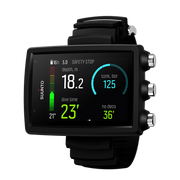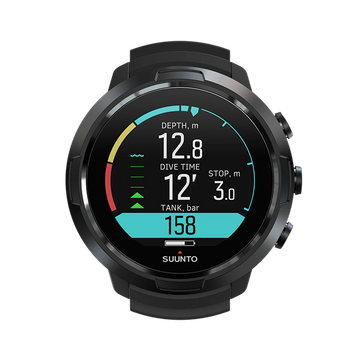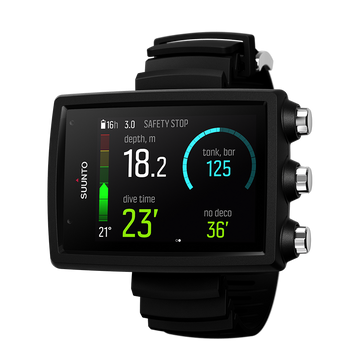

Suunto-blogg

Vertical Week 2018
Now is the time to celebrate both the suffering and the flying. Welcome to the third annual Vertical Week!
Vertical Week 2018 starts on Monday, February 26 and ends on Sunday, March 4. Put on your running shoes, hop on your bike or release your heels and start skinning up the hill.
Track your adventures with your Suunto watch, sync with Suunto App, and by the end of the week we’ll know which country climbs the most in a week.
Every move counts!
Share your Vertical Week experiences on Instagram or Facebook with #VerticalWeek. Three of the most inspiring posts will win Suunto Spartan Sport Wrist HR Baro watches.
Terms and conditions apply. Read them here.

Figure out your training zones and supercharge your fitness
Key components to improve your fitness are frequency, duration and intensity. Frequency and duration are easy to understand, but training intensity is a bit more tricky. How hard is hard? And why should I care? Read on to learn about intensity zones and about defining them.
That Janne Kallio works at Suunto on new product and solution concepts shouldn’t surprise anyone – after all, triathlon is his passion. Neither are we surprised that his book (Treenaa tehokkaasti, currently only available in Finnish) can help you learn to how to use technology to improve your endurance results. But the most surprising thing? Using training zones is easy. “Training does not need to be complicated,” says Kallio.
“The key aspect of reaching progress in one’s fitness is the ability to increase the physical load over longer period of time. Research shows that for people who are only starting to train, the easiest way to progress is to simply add one more training session in the week. Running three times a week versus two will improve fitness.”
But after a certain limit, simply running more is not enough.
“Running speed increases quite linearly on all distances up to about 60–70 km per week. After that the correlation isn’t as strong. When training more than 100 km a week your running speed does not necessarily get any faster.”
What Kallio is explaining is that adding volume to your training only helps up to a certain point. After that getting faster requires focus on other things, like the correct distribution of training intensity.
“Quite common training model is the so called polarized model where a big chunk, i.e. 80 % of training, is done aerobically, and a small portion of training with high-intensity. In order to follow this type of model one needs to be aware of one’s intensity levels.”
But what does intensity actually mean?
Training on different intensities stresses your body in different ways and leads to different kind of physiological adaptation. During light or moderate efforts the energy is supplied by the oxidative system, burning fat and carbs, and your blood lactate levels remain the same as at rest (0,8–1,5 mmol/L).
As the intensity increases, lactic acid starts to build in your muscles. Your body is still able to flush it out but the lactate levels rise above your resting levels. In training terminology this is your aerobic threshold (usually marked at 1,5–2,0 mmol/L).
If the intensity of the exercise intensifies even further, at some point your cardiovascular system can’t supply your muscles with enough oxygen, and lactic acid starts to build in your muscles faster than it can be removed. This point is called your anaerobic threshold (usually at around 4,0 mmol/L).
Based on these values, five zones are defined. Zones 1 and 2 are below aerobic threshold. Zones 3 and 4 between aerobic and anaerobic thresholds. Zone 5 is above your aerobic threshold. (Some of the zone-based models split zone 5 to fit dedicated sprint / explosive training into this intensity.)
Zone 1 is for recovery and warm-ups/cool-downs, zone 2 for long endurance sessions, zone 3 for tempo work, zone 4 for high-intensity intervals and zone 5 for maximal, VO2 max efforts.
The intensity zones are commonly defined based on heart rate, running pace or cycling power. Depending of the personal preference, type of training and equipment available one can use any of these models in their training.
How to define your personal heart rate zones?
It is important to know your zones to be able to follow a training plan and to keep structure in your training. “Without this knowledge easy runs often become too hard and hard ones are not hard enough. Zones help you understand and commit to what you are supposed to do,” Janne Kallio says.
There are basically three ways to define your heart rate zones: an estimate based on your max heart rate, a field test and a lab test.
Says Janne: “Statistically an estimate based on your max heart rate is valid, but as we know, individual differences are large especially in anaerobic threshold. The first challenge is the estimation of maximum heart rate and then the percentage of this to set the right level for anaerobic threshold. The percentage is an estimation as well.”
“The estimation of maximal heart rate is a good starting point. After some really hard workouts it’s definitely good to update your maximum heart rate based on personal experience. But for a goal oriented athlete, more accurate values are needed.”
The best way to get to know your personal HR zones is to take a VO2 max test with blood lactate analyses at a lab. But that is not necessary for every athlete. You can get a good idea of your personal intensity zones with a fairly straight-forward field test: After a good warm-up, run a 30-minute, race-pace effort. 10 minutes into the test hit the lap button on your Suunto. After the test use the average heart rate of the 20-minute lap as your anaerobic threshold.
Run hard the entire half an hour, but don’t start out too hard. After doing this test a few times you will learn to pace it better.
“After you have got your anaerobic threshold, it is time to make some calculations. There is some published research done on where the aerobic level fits based on anaerobic threshold,” says Janne. “It’s good to understand that an accurate anaerobic threshold is the basis of good zone distribution.”
Zone 5: Above your anaerobic threshold. Zone 5 ends at your max heart rateZone 4: 94–99 % of your anaerobic threshold. The upper limit of zone 4 is your anaerobic thresholdZone 3: 89-93 % of your anaerobic thresholdZone 2: 83-88 % of your anaerobic threshold. The upper limit of zone 2 is your aerobic thresholdZone 1: <82 % of your anaerobic threshold. Zone 1 starts at your resting heart rate.
Note, these % values are from anaerobic threshold heart rate, not from maximal heart rate.
There are also other zone models that you can use. For example some of the zone models place your anaerobic threshold within zone 4 and in some models zone 1 does not start at rest heart rate but above it at 55 % of maximum heart rate.
Kallio says that’s not really important – it’s about the concept: “What one needs to understand is that the role of the zones is to ensure you train in different intensities.”
Different activities, different intensity zones
“It is also good to know that your heart rate zones differ slightly in different endurance sports. Activities where more muscles are working also require more oxygen meaning your anaerobic threshold is higher in these sports. You will reach your anaerobic threshold earlier in swimming than in cycling, running or cross-country skiing – in this order,” Janne reminds us. “So if you are, let’s say, a cyclist and a runner, you should test and define your zones for each of the sports to target your training intensities correctly.”
It’s just one example of how a little knowledge can help out a lot – a whole lot.
LEARN HOW TO USE SUUNTO VERTICAL'S INTENSITY ZONES
Main image © Philipp Reiter

How do you train, Kilian Jornet?
Kilian Jornet has spent a lot of time in the mountains since he was a kid and has been training to improve since he was a teenager. All the hours, days and years of training have made him one of the best all mountain athletes ever. Whether running, skiing or climbing Kilian is breaking records, winning races and inspiring others.
Kilian, in the video you say: “If you don’t have pleasure when you train, you will never improve!” What makes training fun for you?
You don’t train to have fun but to improve, to reach goals or to adapt, but it is important to have pleasure doing the activity you do to spend this amount of time easily. I love to ski and run and to be in the mountains and I’m enjoying when I do that and it is part of my training.
How do you turn tough days into good ones?
Some days you just switch to work mode, listen to music in your headphones and watch the watch count the time and meters you need to do that day. Sometimes it’s more hard than fun but it is important to do. A good or bad day is not fun or not fun. Some training session can be hard and fun, fun but not hard, hard and not fun or not fun and not hard. Good or bad depends on what you have improved or learned, what have you experienced.
How has your training changed over the last 10 years?
Not much in big lines, I like the principles of training I do, like quantity over quality and specific training. They seem to work for me. I try to be open and look at new ways to train and test different things.
How is it possible to be fast from short races, like a vertical km, to super long ultras?
Train different situations, train some long days, some short. It does demand a lot of time (years) and time (hours a year) to do all different kind of training.
What are your strengths?
In physical capacities, recovery rate and VO2 max. Then psychologically I can enter a non-emotional state that helps me in stress situations. Now also my experience.
What would you still like to improve?
Many things. It’s important to work to improve both the weaknesses and the strengths.
What are you focusing on this year?
Mostly rehab and recovery from my shoulder surgery that I had in October. Then I’ll see how it goes. I had a ski fall some years ago and dislocated both of my shoulders. Since then I have dislocated them several times and knew I needed to get the operation done at some point.
I don’t really focus but try to be in good shape on average and adapt depending on the next goal that can be a long or short ski mountaineering or trail running race or mountaineering.
What motivates you to keep pushing your limits?
I just think it is great to know yourself.
Watch Kilian's video "How do I train (again and again)"
Kilian Jornet started training the day he was born. The mountains were his playground and without realizing it he created his own training philosophy that is based on repeating, trying and failing. Watch Kilian’s How do I train now!
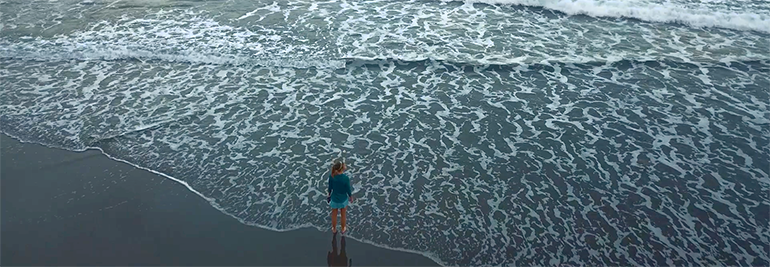
Emelie's off-season
“It’s really smooth for us Scandinavians to travel to Tenerife because of the direct flights. The island itself has a lot of variety: the beaches, green forests and the barren mountain. It has everything. I really enjoy it here”, says Emelie.
A morning run on the beach.
However, Emelie’s off-season isn’t all about relaxation.
“I heard about this run about five years ago when I was here on the island. I was really tired after a race and had one week to relax so I couldn’t do it then.”
Emelie's Suunto Spartan is ready for the route called 0-4-0.
“It is fascinating to try to do fast times on mountain routes. I want to see if I can do it fast and, if I can, it’s great. But if I can’t it’ll be a great day anyway!”
Watch the video and follow along on Emelie’s holiday in Tenerife.
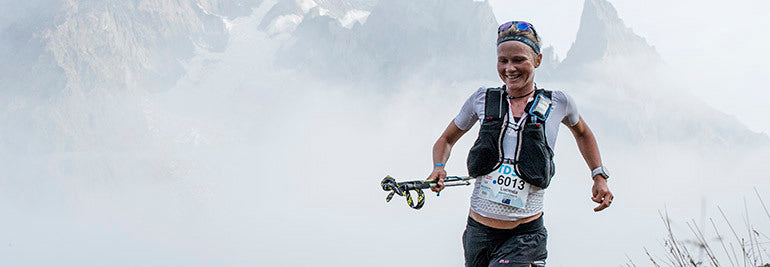
Lucy Bartholomew on how to almost quit... then not
Ultra-runner Lucy Bartholomew is known for a few things: being an up-and-coming young gun on the distance scene, her constant grin, and of course, “bein’ ‘Strayan”. (That’s ‘being Australian’, in case you couldn’t figure it out.) After this year’s UTMB weekend, she’ll be known for another thing: comebacks. After contemplating a voluntary DNF just 30kms into the 120km TDS race at UTMB weekend, Lucy found a spark and picked up 25 female places, finishing the last 7km at a blazing 4:00/km pace, and taking 5th place overall for women.
“I was having some tummy issues early one in the race – and I just couldn’t get anything down. Water, food, gels – the second I brought it up to my lips I felt nauseous, and anything I forced down was just coming back up,” she says. Not long after the six A.M. start, Bartholomew was forced to walk a 15km downhill – which, as any runner can tell you, is a poor place to be losing time. “I think the extra jolting of the downhill just upset my stomach even more,” she said.
It was a shame – Bartholomew had been in Chamonix training and doing reccy for four weeks prior to the race, and she was coming off an impressive finish in the Mont Blanc 80, taking an unexpected 2nd place. The TDS route – more remote, with fewer aid stations, and more vertical per kilometer than UTMB – was to her liking. So coming off the downhill, she was going slowly and just waiting for her support – in fact, her dad who was also in the race – to catch her. “He probably would have told me to stop,” she says. What kept her going? Knowing what was coming – she’d done a proper three-day reccy before the race, giving her a solid overview of the entire course. “I think that helped – knowing what was ahead, no surprises.” And now? “Now I’m kind of glad he never drove by – it was something I needed to get through myself – and I learned a lot about myself out there.”
Nine hours into the race, she managed to get a shot block down her throat, and it stuck. “I’ve never been hit so hard by the sugar in my life,” says Bartholomew. “I think it was because I was just so empty. It really gave me a jolt and let me get back in the race.” She started passing racers, eventually roaring into town at the afore-mentioned speed, passing her last female competitor just 400 yards before the finish line.
While Bartholomew was still ‘disappointed’, the rest of us can agree: it was impressive display of resilience for the young runner. Now that it’s over, what’s in the plans? Lucy is happy to be home – and of course – more running. “It feels like I never left Australia – pretty happy to get back to my routine.” Potential upcoming races include the Ultra Trail Ning Hai in China – she’s not sure if she’ll do the 50 or the 100 – and the Capetown 100 in South Africa.
Next year, she might venture on to American soil. “I’d love to do the Hard Rock,” she says, “but I know people who have waited to get in [via lottery] for eight years!” Definitely not on the list? The Barkley Marathons or anything like it – navigation is not her game. “If it’s not on my Suunto watch, I’m not running – I’m not tough enough for that!”
Images by Damien Rosso / Droz Photo
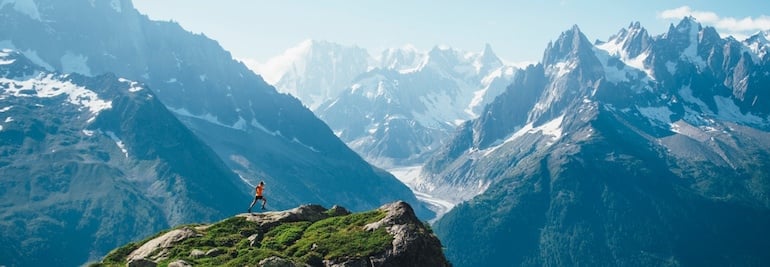
Ryan Sandes achieved his dream. How? He worked (and raced) smart
It was Ryan's third attempt at the legendary race in California, but after getting blown off the line by upstart Jim Walmsley, Sandes’ persistent pace put him on track to grab first place. Now that he’s had eight weeks to recover, run a few more fun ones, and start thinking about next year, we caught up to learn what we could – though we highly recommend watching the video below to hear some of Ryan’s story in his own words.
Sandes went faster by slowing down. (Image by Kelvin Trautman, Red Bull Content Pool)What was different this year? In some ways – Sandes went faster by slowing down. 2015 was rough – he contracted Glandular Fever, a viral infection known for lingering. He later realized that illness was part of the beginning stages of overtraining. As he began working back in 2016, there was something else: Ryan became Papa Ryan. You don’t need to be a family man yourself to know what kind of toll that takes on serious athletic training. In other words: it was hardly the perfect scenario to make a big push at one of the hardest races in the world. But long ago – back before he’d ever run his first Western States – South African running legend Bruce Fordyce sent Ryan a note, and addressed it: “To a future Western States champion”. Suffice it to say Ryan had a goal. How to approach it? “I did a little less training than before,” says Ryan. “More focused and more specific.” His Suunto Spartan Ultra was an important training partner – running trail, it’s tough to keep track of effort using just distance and time, so elevation gain and loss was one of the most important things he paid attention too. Going into the event, much of the pre-race hype was about upstart Jim Walmsley – who’s enjoyed a meteoric (and boastful) rise to ultra-running elite status. Jim thought he could set a course record in 2016 – and famously made a wrong turn at mile 92. He was back again in 2017. “Heading out on to the course, I asked Jim if he was still going to go for under 14,” says Ryan. “He said, ‘yeah baby!’ and took off. At that point I held back.” Sandes was at one point almost an hour behind Walmsley, ‘running his own race’ as he puts it. But as Sandes kept going through checkpoints, word began to trickle back: Walmsley was slowing down. “I respect him for trying it!” says Ryan. “It takes balls to even make an attempt like that.”
A dream comes true. (Image by Corinna Halloran, Red Bull Content Pool)Then he got reports that Jim had even sat down early in the race. Then Ryan made up 17 minutes over just eight kilometers. At the next station he was right on his heels. Finally, he passed Walmsley, and held on for a win at Western States, the grand-daddy of all ultra-marathons.
Since then he’s had some fun – he took part in the Burro Racing World Championships – and also entered a serious race, the CCC at UTMB weekend in Chamonix. Legs still tired, he finished, but in a disappointing-to-him 21st place – although to anyone in the know, finishing at all is pretty impressive. Up next: a project he doesn’t want to talk too much about – stating only that it’s high altitude and far away – and next year’s big goal: UTMB, a race that’s only been won once by a non-European (and that winner came from Nepal.) Can he win it? He’ll have to train smart again – “I think you really need to spend time in that environment, so you’re used to racing in that environment” – but in ultra-running, the human body itself proves anything is possible. In the meantime? Rest, rest and more rest – because rest works.
Main image © Kelvin Trautman / Red Bull Content Pool
Watch this video about Ryan's Western States 100 experience








